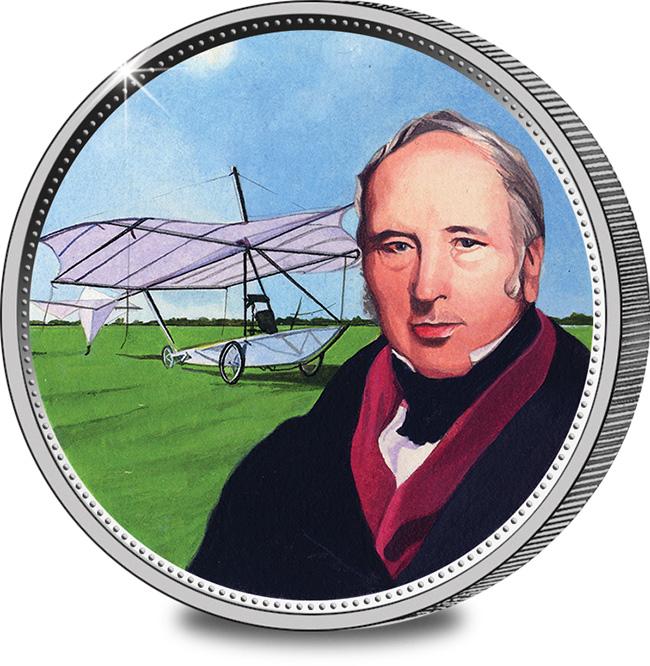
 |
Full name: Sir George Cayley
Born: 27th December 1773
Invention/Achievement: Pioneer in
aeronautics/Developments in heavier than air aviation
Date of
introduction/Achievement: 1799-1853
Died: 15th December 1857
|
Everyone knows who pioneered heavier than air flight - it was
the Wright Brothers in 1903, wasn't it? No, actually: it was an
Englishman, Sir George Cayley who in 1799 first laid down the basic
principles of aerodynamics on which the Wright brothers (and those
who followed them) based their experiments.
Sir George Cayley, 6th Baronet of Brompton, was born
in Yorkshire in 1773 into an aristocratic family. Notebooks
from his schooldays, only discovered in 2007, show that even as a
youth he was fascinated by the mechanics of flight.
In 1796 he built his first aerial device, a model
contra-rotating helicopter. He rejected current theories of
flight that mimicked bird flight by waving wings and instead set
about devising workable principle of aerodynamics.
His medallion of 1799 clearly illustrates the forces that affect
flight. He continued his research, discovering that dihedral
wings (i.e., wings higher at the tip than at the root) improved
stability and that a curved wing surface generated more lift than a
flat one.
In 1810 he published his classic treatise "On Aerial
Navigation", stating that the three vital elements of heavier than
air flight were lift, propulsion and control. In 1816 he
turned his attention to lighter than air machines, culminating in
1837 in a design for a streamlined airship powered by a steam
engine.
In 1849 he built a glider based on his 1799 design that made a
short flight with a 9-year old boy aboard. This was followed
in 1853 by a larger glider which successfully carried one of
Cayley's employees (variously reported as his coachman, footman or
butler) on a flight across Brompton Dale. The name of this
first, understandably reluctant, heavier-than-air pilot has been
lost to posterity.
Cayley's fertile mind was active in other fields beside
aviation, in his search for lighter weight he conceived a landing
gear wheel using strings as spokes, a concept which is still used
in tension spoke wheels today. He also developed a
self-righting lifeboat, a "universal railway" (caterpillar tracked
vehicle) and an internal combustion engine powered by gunpowder, as
well as making contributions to areas as diverse as prosthetics,
electricity and land reclamation.